EU LIFE fund pays a visit
The two largest funders of the project are the National Lottery Heritage Fund and EU LIFE fund, both significant sources of funding for conserving wildlife. Together these two funds provide most of the funding for our work. We are bound by contracts and an agreed project plan and must report regularly to the funders to show that we are doing this. Earlier this month we welcomed the EU LIFE monitor, Neil Wilkie, to Orkney to check our progress. He visits to see how the project is meeting the conditions of the grant. In our case, our contracts specify that funds must only be used for agreed activities to remove the invasive non-native stoat from Orkney, prevent the spread and re-introduction of stoats and monitor the impact on native wildlife. To re-assign any of the funds and project time for any other purpose would break the grant conditions. We are pleased to be making progress – the number of stoats we have removed from Orkney so far has now surpassed 2,000.
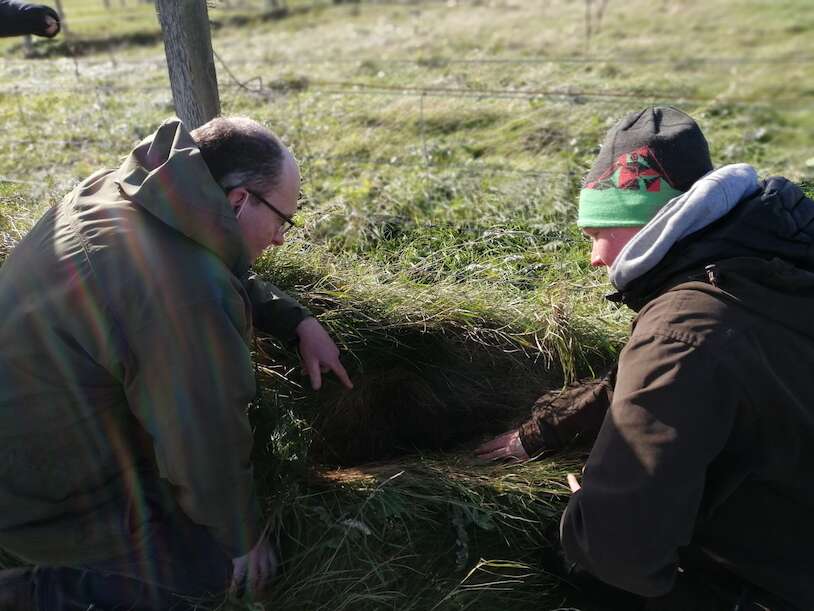
The pandemic postponed his visit last year to review our progress, so there was a lot to catch up with. The team showed him how our volunteers look for signs of Orkney voles, which often means being down on their knees and looking for their poo and runs in the grass. These voles, found only in Orkney, are easy prey for stoats but voles are also an integral part of the food chain for the hen harrier and short-eared owl.
Neil also watched a demonstration by Thorn, one of Europe’s first stoat detection dogs. Thorn, with handler Grant, demonstrated how our detection dogs find signs of stoats and indicate this to their handler. These demonstrations in the field, and a presentation in the warmth, completed his day with the project. We must answer a list of formal questions as part of the monitoring process so consequently the project keeps extensive records to be able to provide answers to their audit. This is very much a belt and braces report to satisfy EU LIFE that the project is doing what we said we would and gives us a high standard we are only too happy to aim for.
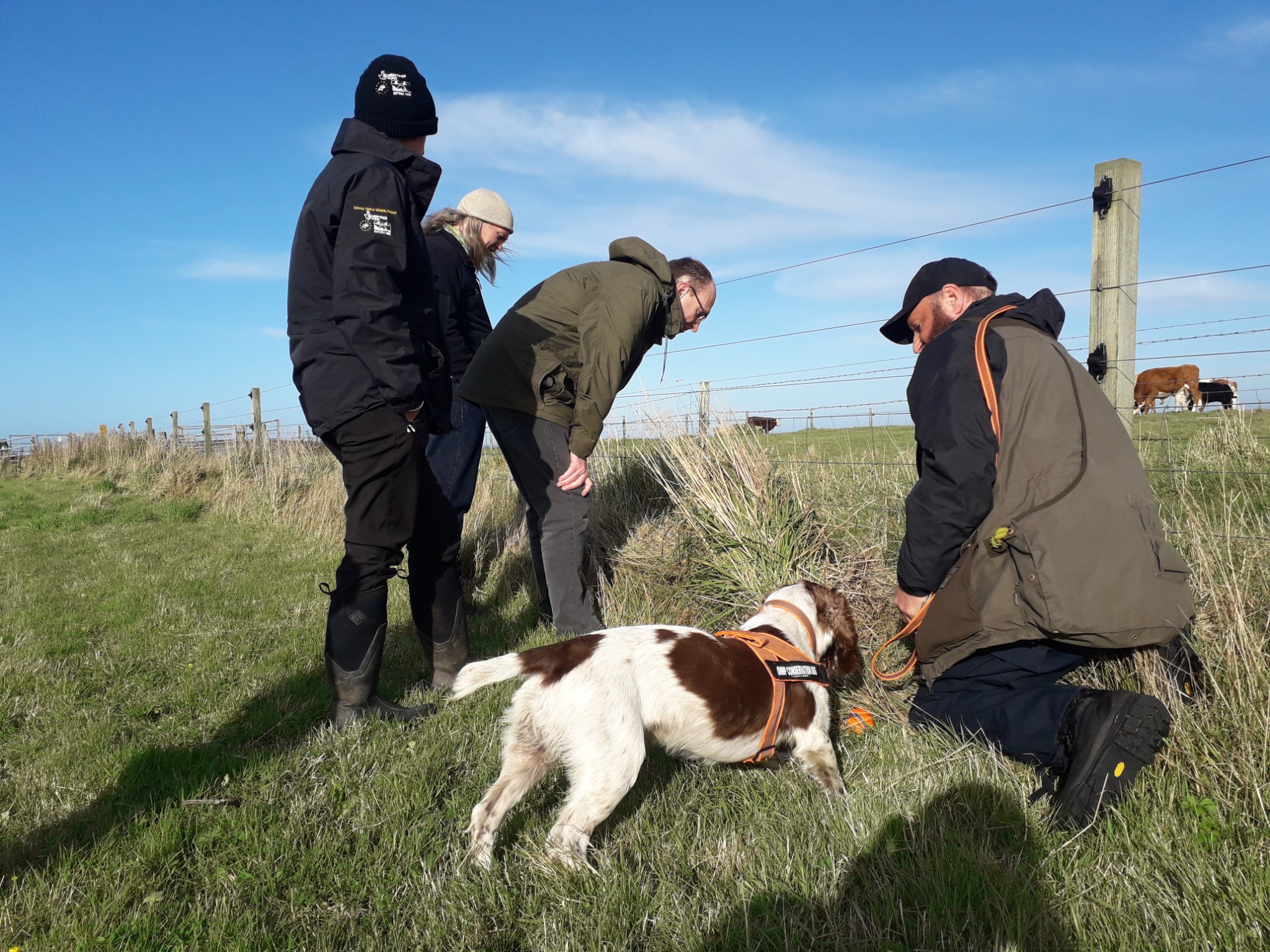
Trapping update
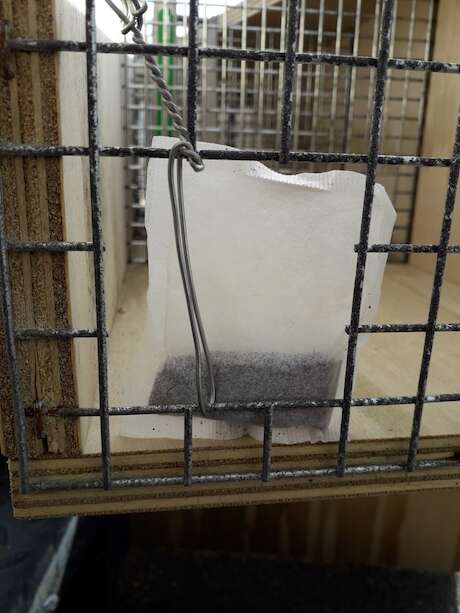
This month we passed the significant milestone of removing over 2,000 stoats from the Orkney Mainland, South Ronaldsay and the connected isles.
This success is only set to continue as the project responds to public sightings which help us adapt the trap network. During the breeding season stoat families have less need to raid the bait in the traps as they have access to a plentiful supply of wildlife to eat. As the young stoats leave to find their own territories around July, there has also been an increase in stoat sightings and consequently the number of stoats trapped.
The team stopped visiting the traps in sensitive areas protected by Habitat Regulations Appraisals (HRA) during the bird breeding season. This access was restored on the 15 August to areas with breeding hen harriers (and other birds of prey) with additional access on 15 September around red throated diver breeding sites. You can find out more about the HRAs by following this link.
Now that we are back checking the whole network again, we continue to make made every possible adjustment to make sure as few other animals are caught while still ensuring the primary purpose of removing stoats from Orkney is successful.
June 2021 | July 2021 | Aug 2021 | Sept 2021 | Project total *** | |
Trap boxes deployed in the field | 116 | 137 | 50 | 106 | 6,289 |
Individual traps checked* | 10,595 | 11,046 | 10,890 | 10,881 | 138,537 |
Stoats caught** | 90 | 260 | 246 | 183 | 2,093 |
* many trap boxes contain two traps
** the stoats are killed using a type of lethal, humane trap – the DOC 200 – which is approved by the Spring Trap Approval Order for Scotland and the UK and meets the welfare standards defined by the Agreement on International Humane Trapping Standards (AIHTS).
*** Total statistics start date from 1 August 2019.
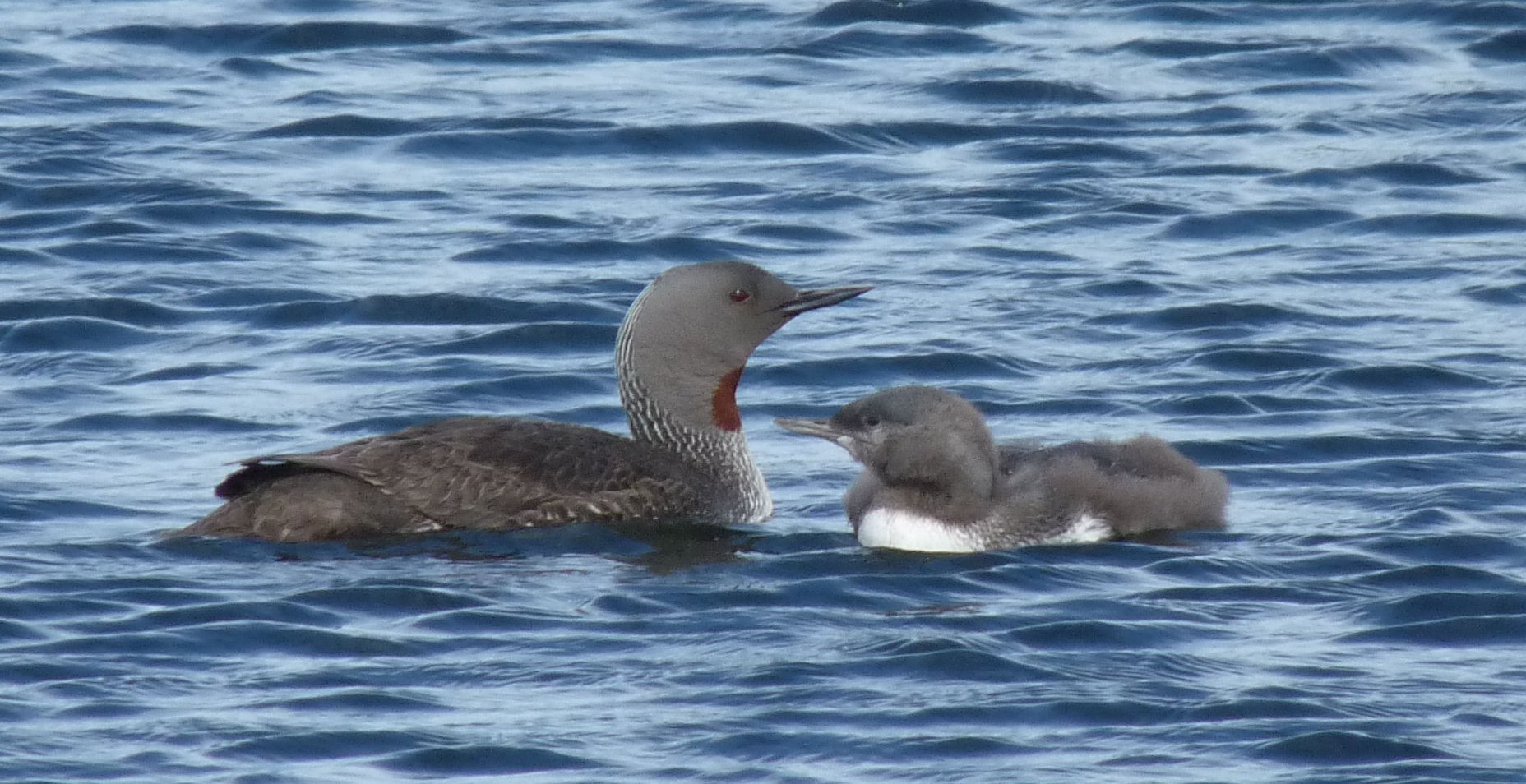
Red throated diver and young are protected by HRAs we observe during breeding season Photo: Mike Partridge
While the wire-tied entrances to the trap boxes have reduced the numbers of other animals being caught, we are sorry to say that there still have been some small animals finding their way into trap boxes. We want to reassure everyone that these incidents remain incredibly rare in the context of the large number of traps and trap checks and will have no impact on the overall population of the other wildlife being caught. In the meantime, we will continue to do what we can to progressively minimise this.
Since beginning of May 2021 through to end of September 2021, as well as 779 stoats caught, an additional 698 rats, 457 rabbits, 144 starlings, 33 mice, seven frogs, six hedgehogs and 83 voles have been found in the trap boxes. There have been 53,362 trap checks over these months so, to set this in context for example, voles were found during 0.16% of the trap checks.
Orkney International Science Festival competition - deadline extended
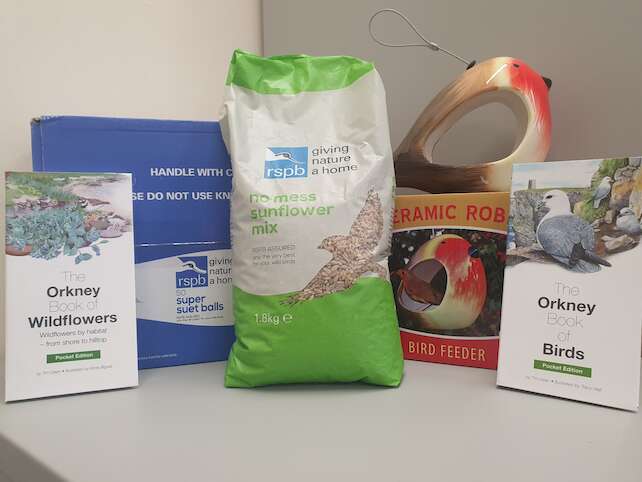
As the world celebrates the 100th anniversary of the birth of celebrated Orkney poet George Mackay Brown, we too are looking forward to seeing what the next generation of poets, writers and filmmakers produce celebrating Orkney's native wildlife and dialect.
There is still time to enter the creative competition we are running in association with Orkney International Science Festival and STEM Orkney as long as you send your work using a teacher's email address. Due to popular demand the competition deadline has been extended to 15 November. Find out more about the competition and how to enter on the festival website.
Sign up, sign up!
We would be super grateful if you could spread the word about our new website and encourage folk to sign up to news updates on how we are protecting Orkney’s unique native wildlife. You can scroll to the bottom of every page on our website to click subscribe to receive our regular blog. That way you will never miss a thing!
Until our next issue, you can keep up with our progress via our Facebook page and our monthly column in the Orcadian newspaper. Any questions please feel free to contact us.

